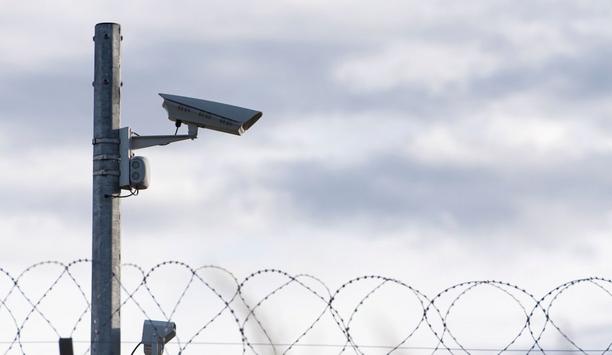Within the unique high-security environment of Prisons and Detention Centres, CCTV images can be used not only to prevent unauthorised access but also to detect violent confrontations, smuggling of contraband, self-harm / suicide attempts, escape, and to protect prison infrastructure from vandalism. In modern Detention facilities, images can prove vital for evidential purposes of events during arrest procedures – to assure the safety of both detainees and officers.
In order to protect prisoners, staff and infrastructure, as well as enforce site-wide health & safety, and security procedures, prison CCTV installations commonly feature surveillance cameras that cover visiting areas, corridors and selected cells, in addition to building perimeters and fence lines. In Detention facilities, cameras can be deployed to cover custody suites, custody desks, corridors and entrance/exits.
Comprehensive security remits and duty-of-care to prisoners and detainees are just a sample of reasons why in today’s multi-faceted custodial environments, high-quality CCTV camera images play an essential role in facility management – where they are used to provide an essential aid to staff supervision of prisoners and detainees, 24-hours-a-day.
High-quality NVT video
Ensuring the supply of reliable, crystal clear footage from every CCTV camera in a system, the use of NVT UTP video transmission maximises camera investment and performance; delivering interference-free camera images that are ready for effective monitoring and recording.
High-quality NVT CCTV images can also be used as an efficient means of detecting highly specific behaviours within detention facilities, or as a means of visual verification for remote door access control, to facilitate the co-ordination of responses to incidents, gather evidence, and ultimately – to improve overall safety within the institution
Specified throughout many detention facilities across Europe, NVT’s UTP CCTV Hybrid VideoTM technology can provide the cornerstone for the transmission of high-quality CCTV images up to 1.6km (1 mile), i.e. from a camera to the control room.
As well as offering prison and detention facility managers a viable alternative to using fibre-optic or coax cable media, due to the flexible nature of UTP based video transmission solutions, Cat5 UTP cable (or better) also offers a simpler and quicker installation. This intrinsic characteristic helps to minimise engineering time on-site, disruption to daily prison operation, and overall project duration: all with associated cost saving and project management benefits.
Flexibility of installation
As UTP multi-pair cable is much smaller in diameter than the equivalent coax bundle, cable containment and space management within a prison or custody suite is very much simplified using NVT UTP video transmission, affording the provision of easy, low-cost CCTV camera networks.
Allied to the UTP cable media’s inherently smaller size, additional/spare UTP pairs can be readily included in the Cat5 infrastructure – making it easy for further cameras to be added to the system in the future, if required. Using NVT, these can be easily be connected into the CCTV network, without the requirement for supplementary cables / containment to be installed.
Due to the multi-application nature of Cat5 structured cabling (i.e. where it is used for telephone networks, data transfer etc.), most prison buildings are already equipped with a comprehensive cable infrastructure, including ‘spare’ UTP pairs; which can be cost-effectively utilised for CCTV camera image transmission.
Cat5 cable networks can also be specified at the planning stage of any new-build Prison facility or wing, with site contractors installing a dedicated UTP backbone as part of the construction schedule – ready for the connection of NVT UTP video transmission products to distribute high quality CCTV images.
Thanks to the ‘built-in’ interference immunity of NVT video transmission products, NVT UTP cable networks can be included in cable containment alongside other services, permitting economical system design, allied to interference free operation – even when installed adjacent to high-voltage services, such as electrical power infrastructure.
Power, video & data
Saving further on installation time, equipment, and associated costs, NVT Power, Video & Data (PVDTM) technology can be used to supply cameras with low-voltage power, via the same UTP cable network. Negating the need for additional fused spurs to be installed at each camera point, this technology means electrical contractors are not required to be involved in the installation of the camera network, with the benefit of saving time and money in the provision of camera power.
Using NVT Hybrid Video permits |
NVT technology can be integrated to provide the best of both analogue CCTV and digital solutions. Using NVT Hybrid Video permits the use of cost-effective analogue cameras, rather than less cost-effective IP alternatives. High-quality NVT analogue camera signals can be distributed to an on-site digital video recorder (DVR), affording the best possible quality of recorded images for investigative / evidential purposes. However, if required, both live and recorded camera footage can be encoded (via a DVR or separate encoders) to a LAN/WAN for offsite distribution, enabling remote monitoring if necessary.
When considering the use of fibre-optic cables for the transmission of camera video, it is important to consider that this cable media requires highly specialised skills / professionals to install it, which adds substantially to the overall installation cost. NVT Hybrid VideoTM technology utilising UTP cable can be used to provide a highly-effective solution versus the use of fibre-optic cable, when being used to distribute camera video for distances over ‘the first mile’ (1.6Km). As an example, this methodology can be deployed to extend a prison CCTV network being extended to protect a detention facility’s fence line.
NVT’s practical UTP based solution not only delivers ‘fibre like’ video quality, but also delivers it at a fraction of the cost. Systems utilising NVT UTP to transmit camera video for ‘the first mile’ over UTP, and integrating it to fibre at a central node for onward transmission over greater distances, are proven to dramatically reduce total system costs – whilst maintaining the high-quality of the transmitted camera video.
Yielding significant savings, superior image quality and interference free video, NVT video transmission technology has provided more than 4,000 channels of surveillance in Prisons and Detention Centres across the world – all backed by NVT’s reputation for reliable products and quality post-sales support.












